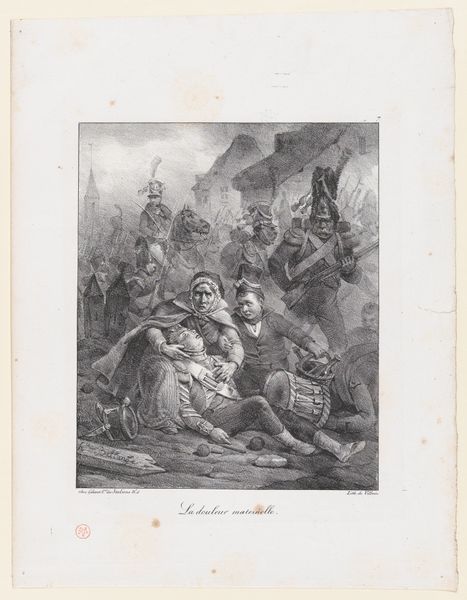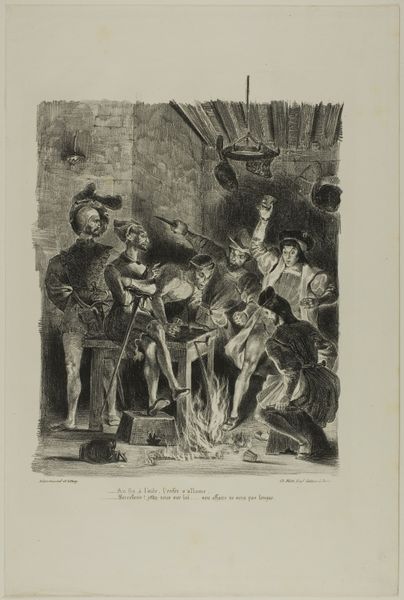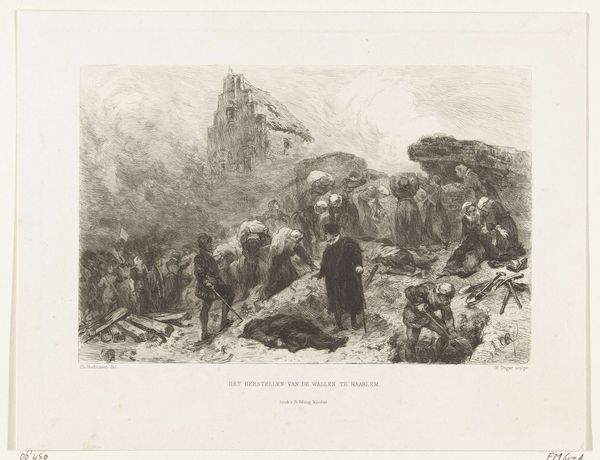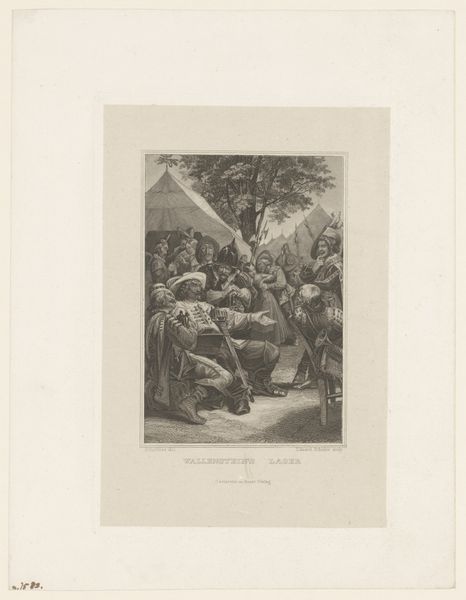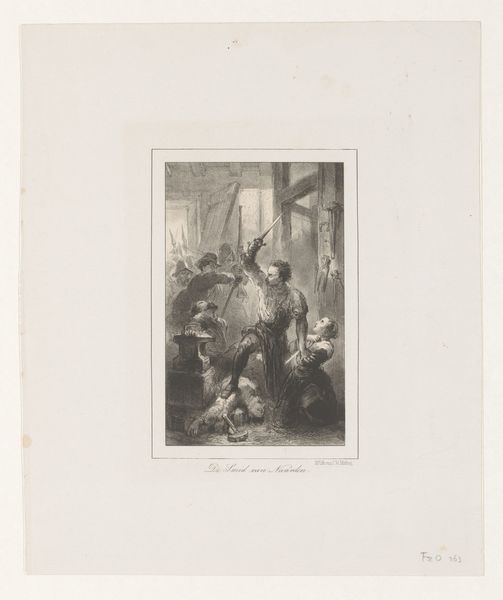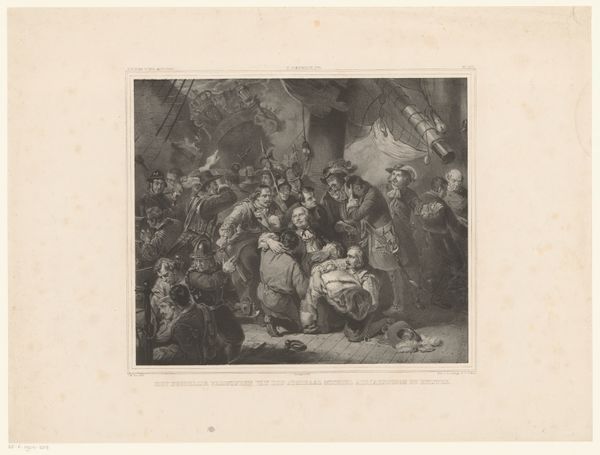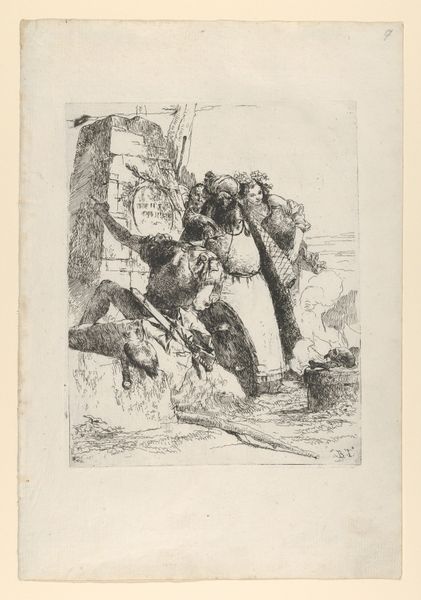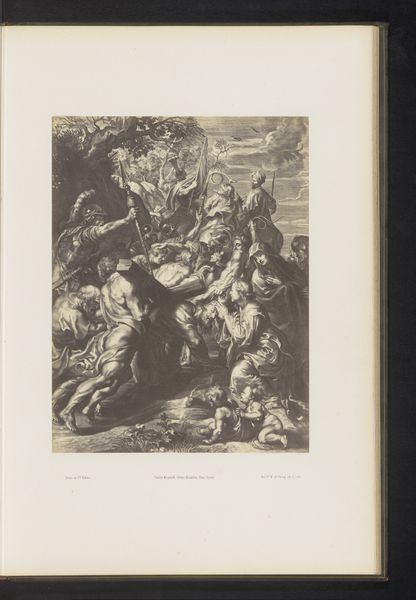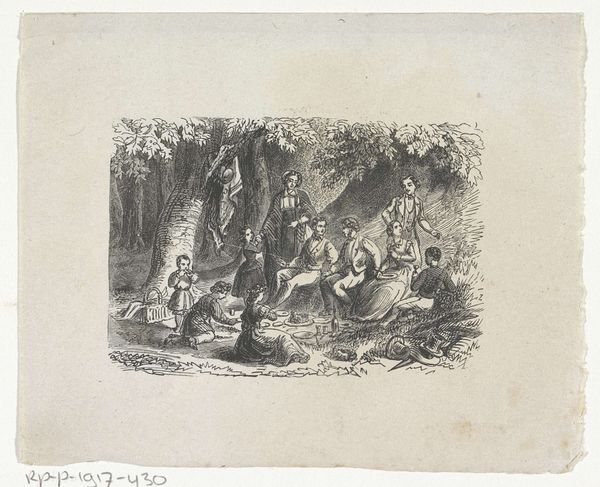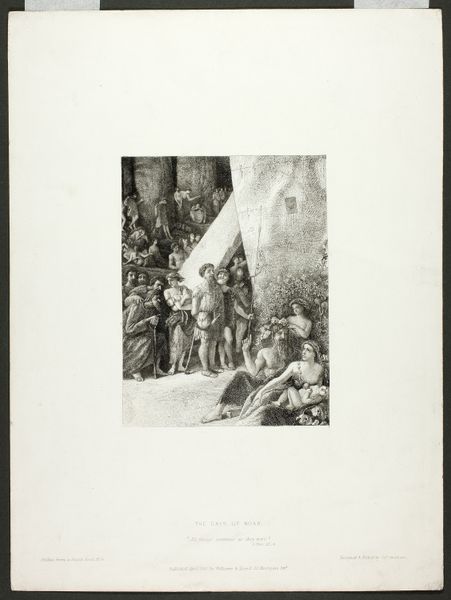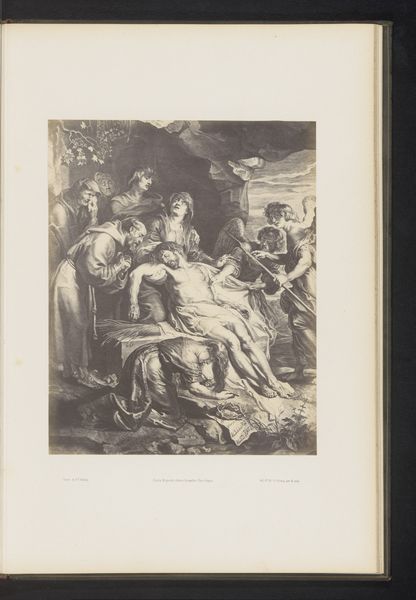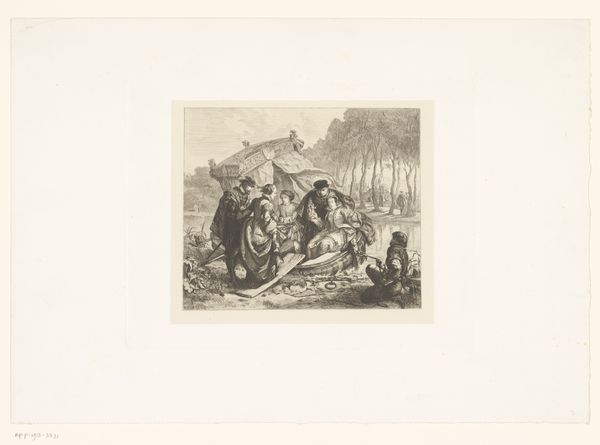
Hamlet and Laertes in Ophelia's Grave, plate 15 from Hamlet 1843
0:00
0:00
drawing, lithograph, print, paper
#
drawing
#
narrative-art
#
lithograph
# print
#
figuration
#
paper
#
pencil drawing
#
romanticism
#
history-painting
Dimensions: 285 × 194 mm (image); 546 × 360 mm (sheet)
Copyright: Public Domain
Curator: Right now, we're looking at "Hamlet and Laertes in Ophelia's Grave," a lithograph by Eugène Delacroix, created in 1843. It captures that iconic, turbulent scene from Shakespeare's Hamlet. Editor: Oh, the emotional chaos is almost palpable. Just look at the frenzy, the figures bursting out from the earth. You can practically hear the screams echoing out from the image. It's raw. Curator: Absolutely. Delacroix was really at the forefront of the Romantic movement. His goal wasn't just to depict a story but to evoke intense emotional responses, in this case using shading, lines, and tonal variety achieved in the lithographic printmaking process to convey grief, despair, and madness. Editor: It's fascinating how the historical context shapes our reading, isn't it? Here you've got two men grappling over a grave! If this were a photograph today, it'd be scandalous! Back then, though, I am curious about the contemporary interpretations and the audience Delacroix might've envisioned? Were they drawn in? Curator: Printmaking really changed access, I believe. So by turning to lithography, it becomes a print meant for a mass audience of his day rather than wealthy collectors, creating more access to interpretations of plays like "Hamlet". Editor: Right? Which adds another layer! I find my eye drawn again to Hamlet, grappling like he does! I see someone in mourning with the very visual fight Delacroix gives us. He wrestles the grave to face despair. Curator: Well, Romanticism, which dominated European art during much of the 19th century, really turned towards individualism and personal experience, moving away from enlightenment rationalism, or more Neoclassical tastes of that time. Here we have it displayed at the Art Institute, reminding viewers to pause. Editor: Pauses make art move you differently. It almost begs viewers to become wrapped in that emotion! Thanks for the added dimensions here. Curator: Of course. Seeing the dialogue through the sociohistorical factors and experiencing the intensity adds new textures to a literary picture of Shakespeare’s time.
Comments
No comments
Be the first to comment and join the conversation on the ultimate creative platform.
